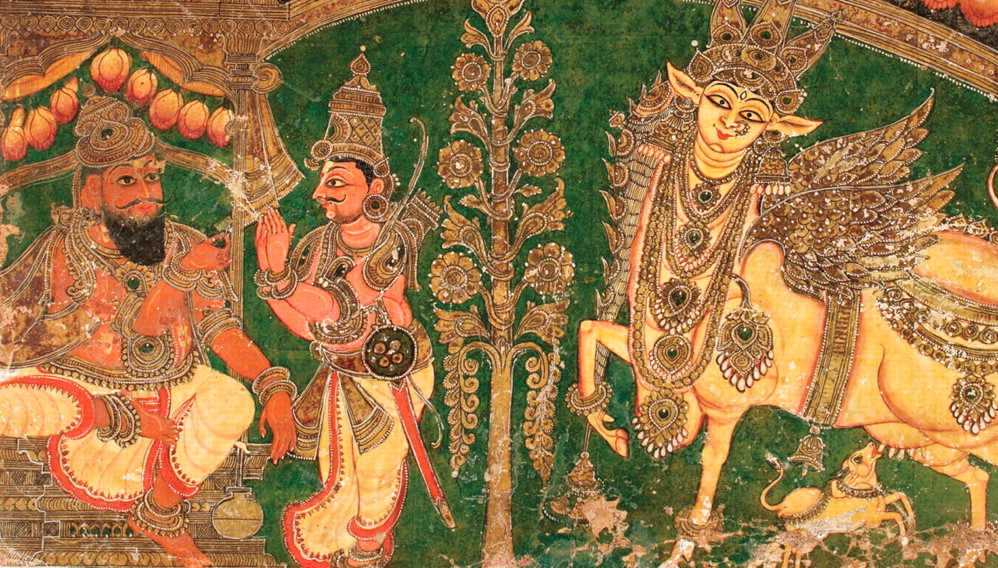The collections in the San Diego Museum of Art range from the medieval to the digital, and simply walking through the front door means stepping into the past.
The architects who designed the museum in Balboa Park drew on 16th-century Renaissance Spanish architecture, like the cathedral at Valladolid and the University of Salamanca. In fact, the museum's entry façade looks like one of the great European cathedrals. Coats of arms (of Spain, California, San Diego, and the United States) are carved in stone, while life-sized statues of Spain's master painters fill the niches, just as statutes of saints resided on the walls of old cathedrals.
Inside the museum, which just celebrated its 80th birthday, there awaits a range of art that reflects the city's heritage as a bridge between East and West, North and South. In addition to its collections of European art, the building holds important groups of paintings and sculpture from Asia and Latin America.
The museum has begun organizing a series of unusual traveling exhibitions that contain works ranging from those of the Indian painter Nandalal Bose (1883-1966) to animated digital and video art by contemporary artists.
Early APA visitors to San Diego may catch the last days of “Tastes in Asian Art,” an exhibit drawn from the museum's extensive Asian collection, scheduled to close on May 20. (The date may vary depending on when planned renovations begin.)
Asia's various social classes developed their own tastes in art over the last thousand years. The wealthy imperial courts used expensive and rare materials—like jade and cloisonné—while more modest folk art was based on natural materials. Warriors liked the gaudy and flamboyant, but scholars took joy in the refined. A separate section is devoted to religious art, and another includes examples of the cross-cultural influence of Buddhism on religious art over many centuries.
The display of Persian art focuses on the museum's newly restored Persian tile painting and includes illustrated manuscripts from the 16th to 19th centuries, a variety of armor and weapons, and 12th-century, turquoise-glazed ceramics from Iran.
A separate exhibition of South Indian paintings will be on display until early June.
On May 19 the museum will present rarely seen paintings from Victorian England, “Waking Dreams: The Art of the Pre-Raphaelites,” an exhibition on loan from the Delaware Art Museum. Works by Dante Gabriel Rossetti, Holman Hunt, John Everett Millais, and Edward Burne-Jones will be displayed.
The Pre-Raphaelites were a group of British painters who founded their movement in 1849. Although their work may seem conventional by today's standards, they saw themselves as revolutionaries defying the formal principles set forth by the Royal Academy of Arts. Their name reflects their return to the simple monastic painting styles of late medieval art that preceded the works of the Renaissance Italian painter Raphael.
The academy preferred deep shadows and muted colors but the Pre-Raphaelites loved brightly colored, evenly lit scenes. Academic painters tried to create the illusion of receding depth, while the young rebels frequently painted a wall behind their subjects to cut off space. Every work represented in this style was rendered with exceptional detail, unlike academic art that softened or shadowed minor details. This hard-edged realism was counterbalanced by the Pre-Raphaelites' use of symbolism for which they drew from the Bible but also from the works of Shakespeare and Chaucer.
Moving from 19th-century paintings to 20th-century three-dimensional work requires only a stroll through the museum's May S. Marcy Sculpture Court and Garden, home to a group of sculptures by contemporary artists designed for exhibition space beyond the walls of the building.
Among these works is David Smith's “Cubi XV,” a prime example of the artist's monumental painted steel sculptures. In 1991 the museum acquired British sculptor Henry Moore's bronze “Reclining Figure: Arch Leg.” This work immediately took its place as the focus of the Sculpture Garden, surrounded by works by Miró, Calder, Nevelson, Hepworth, Nagare, and Zúñiga.
The sculpture garden is also where museum visitors can get off their feet and have a bite to eat. Waters Café@SDMA prepares its food from scratch using only local ingredients, artisan cheese and breads, and organic fruits.
More information about the museum is available by phone at (619) 232-7931 or online at<www.sdmart.org>.▪

